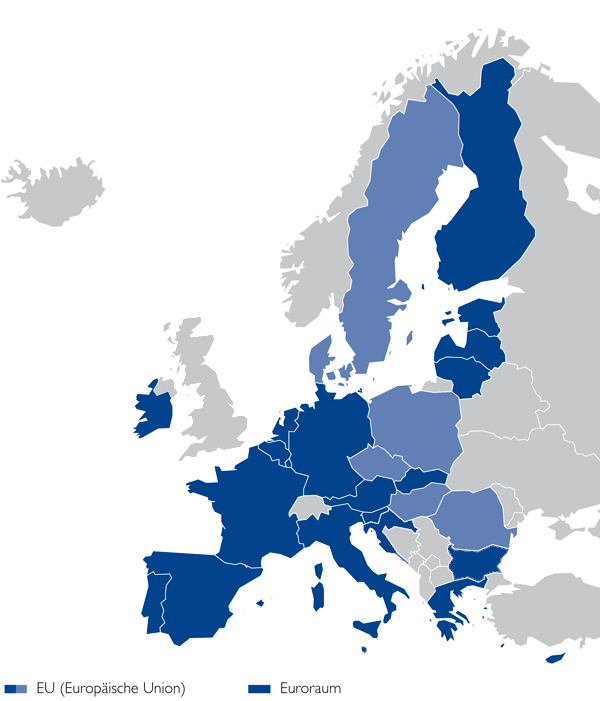The euro
The introduction of euro banknotes and coins at the beginning of 2002 was a major milestone for the Austrian economy. Thanks to the meticulous preparations of the OeNB, the changeover was smooth and rapid even though it represented a logistical challenge of unprecedented proportions.
The history of the euro
The Treaty of Rome (1957) established the objective of founding a common European market to increase economic prosperity and contribute to “an ever closer union among the peoples of Europe.”
The Single European Act (1986) and the Treaty on European Union (1992) build on this foundation. These treaties paved the way to the foundation of the Economic and Monetary Union (EMU) and laid the groundwork for the single currency.
The third stage of EMU started on January 1, 1999, with the introduction of the euro for accounting purposes and the establishment of fixed conversion rates of the currencies participating in the exchange rate mechanism ERM II. Since that date, the euro area countries have conducted a single monetary policy.
On January 1, 2002, Greece joined the Eurosystem. One year later, on January 1, 2002, euro banknotes and coins were introduced in 12 EU Member States. The launch of euro cash as legal tender was a historic milestone on the path toward a single market enabling the free movement of goods, capital, services and people.
As the first among the enlargement countries that joined the EU in 2004, Slovenia adopted the euro on January 1, 2007. The euro area has been expanding continuously to include Malta and Cyprus (January 1, 2008), Slovakia (January 1, 2009), Estonia (January 1, 2011), Latvia (January 1, 2014), Lithuania (January 1, 2015), Croatia (January 1, 2023) and Bulgaria (January 1, 2026).

The Czech Republic, Denmark, Hungary, Poland, Romania and Sweden are EU Member States, but are not Eurosystem members yet at this time.
However, the currency of Denmark participate in ERM II, i.e. the exchange rate may fluctuate against the euro within a determined bandwidth. Participation in ERM II is a prerequisite for introduction of the euro at a later time.
